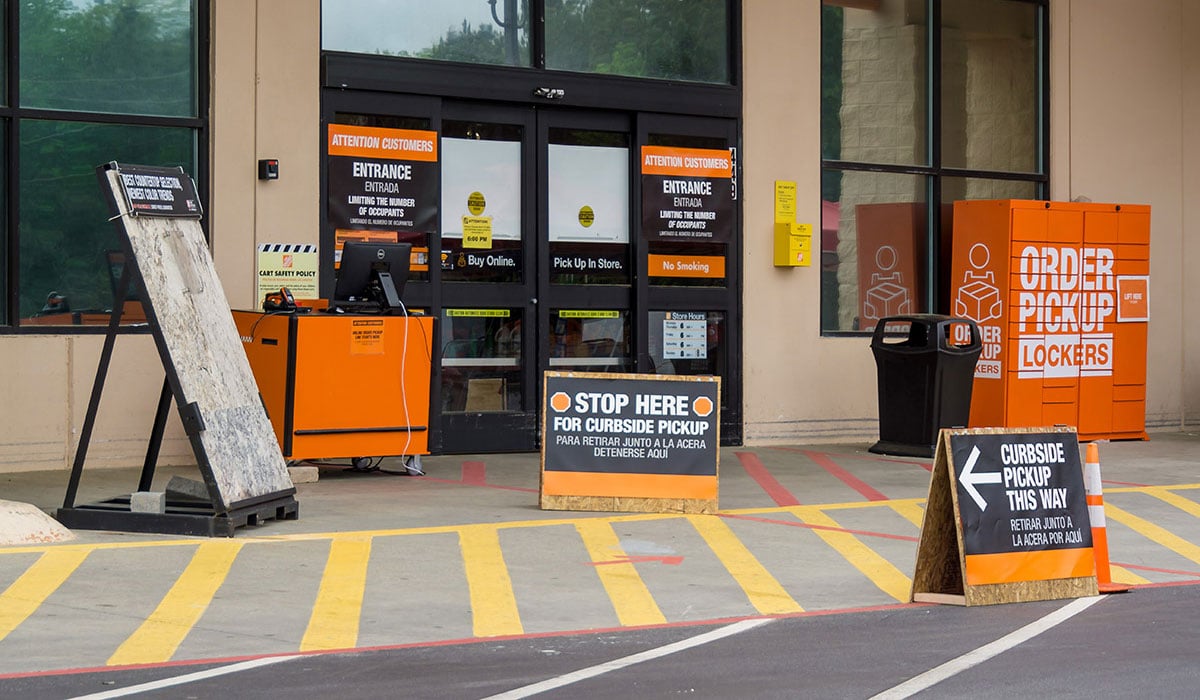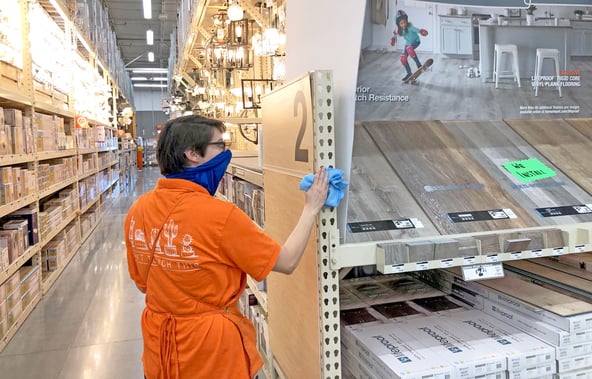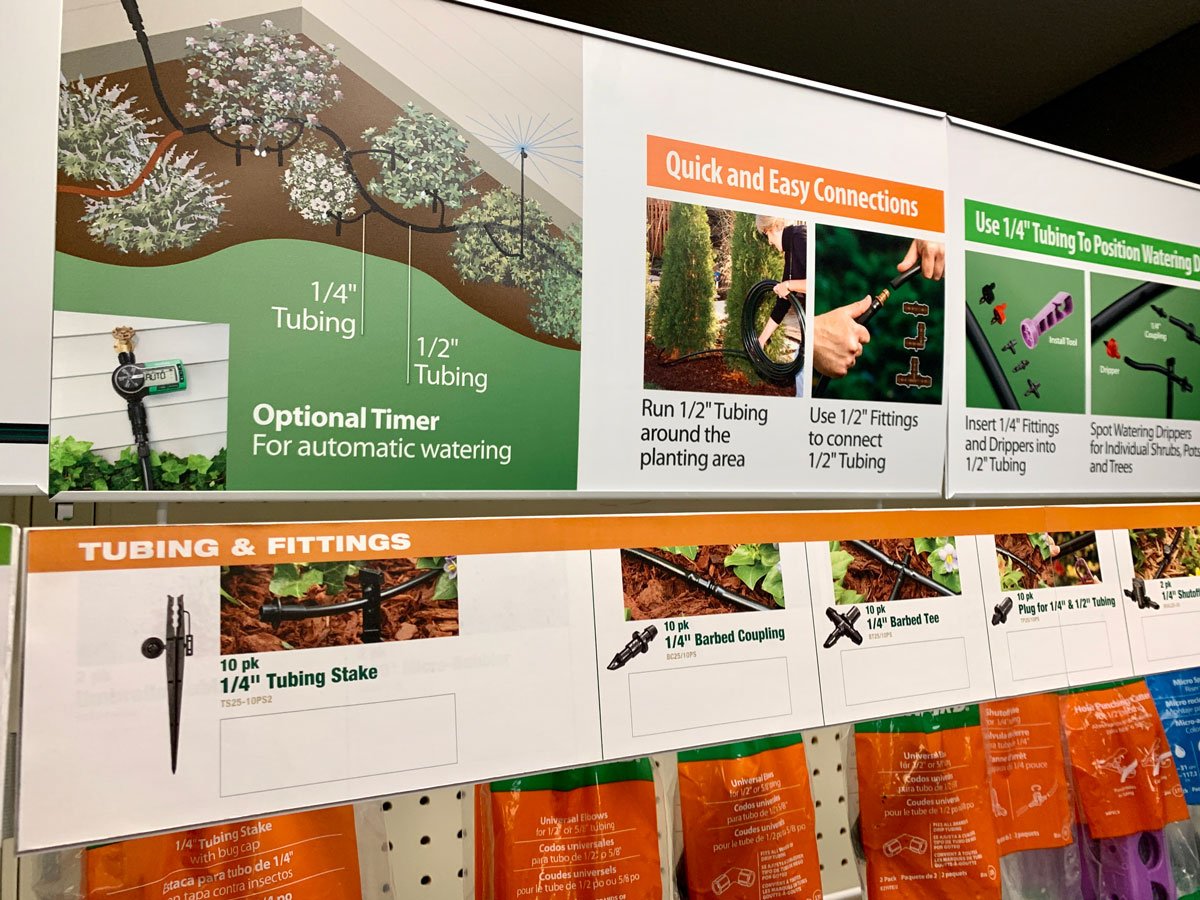
Before Covid-19 safety measures became part of the shopping experience, the role of product packaging and P.O.P. was mostly to provide an immersive consumer experience for your brand. Capture attention. Generate interest. Convert browsers into buyers. (etc.).
And while those in-store merchandising tasks are still important, consumers are expecting more from their shopping trips these days. As reflected in national surveys, consumers prefer safe practices by the retailer. But taking this to a level that possibly affects your merchandising, how might those shopper expectations about safety carry through to preferences in packaging? And if you provide signage, custom racks or other physical display systems, is the format helping to make the shopping experience as safe as it can be?
Changes in retail packaging and merchandising to meet new shopper expectations during COVID-19.
Changes in packaging:
- Make it easy for store associates to pick your products for curbside pickup.
- Offer multi-packs and special values on large purchases.
- Use prominent QR codes on packaging that link to video.
- Strengthen online content.
- Refine your product selection system.
- Explore anti-microbial packaging materials.
Changes in display presentation:
- Use mounted samples to reduce package "touches."
- Make it easy to keep products in the correct bins.
- Enhance your physical display system.
- Add no-touch video players.
- Make your signage work harder.
- Offer free take-home guides.
To examine this topic, we considered views within our own group, pulling from our recent personal experiences as shoppers as well as professionals who create packaging and in-store POP. Following is a summary of those views. Perhaps you have other ideas, even some that you've already implemented. We'd love to hear from you. Please share your comments below.

Packaging Implications
COVID-19 has definitely shaken all of us, leading to a variety of questions and concerns that have implications for your product packaging
1. Make it easy for store associates to pick your products for curbside pickup.
As shelter-in-place orders begin to relax in different areas of the country, more shoppers are beginning to venture out. Yet, 30% say they have recently used outside curb pickup from a store. Whether your products are sold in bulk (as pieces) or in packages such as boxes, bags or carded packs, the store employees who pick your products will be the shoppers. They will be looking for clear identification of the items and ease of scanning bar codes to fulfill the orders. Also appreciated: ease of stacking/packing to avoid breakage.
2. Offer multi-packs, special values on larger purchases
If ever there was a time to encourage higher quantity purchases, this may be it. While consumers are gradually becoming more comfortable with shopping in a store (up 15% in comfort level between mid-April to mid-June), they still want to reduce the number of trips necessary. This is particularly true of purchases for household items and food. But it could easily apply to hardware and home improvement projects as well. Offering promotional pricing on multi-packs may have renewed interest, helping you and the retailer benefit from larger transactions.
3. Use prominent QR codes on packaging, linked to videos
With fewer store employees available to answer questions, plus possibly the consumer's desire not to have any more contact than necessary, shoppers must go it alone more than ever. If your products involve a thoughtful purchase – not just grab and go – consider developing brief videos that answer common questions, linking videos with a QR code (a two-dimensional barcode that is readable by smartphones to link to a website) on your packages and signage. Videos might show your products in use, demonstrate their competitive advantages, provide suggestions for sizes/quantities needed (how to choose), show the basics of installation and other tips that will help convert sales. Remember: If you want the videos to be viewed "in the aisle," keep them short and to the point
4. Strengthen your online content
The general consumer trend toward going online first has certainly spiked in the past few months. And while the online piece of your strategy isn't directly associated with packaging, our team suggests that it should all work together. On retailer websites, for example, shoppers should be able to rotate images of your packages to read all sides, view videos like those mentioned in idea 3 above, download product literature and instruction manuals, see suggestions for other products to buy – all with a goal of helping you lock in your brand before consumers go to the store. View this article for more on how to improve your online content.
5. Refine your product selection system
Packaging that quickly communicates your important selection criteria will help customers make their choices and get in and out faster. Take a new look at the messaging on your packaging. Does it lead to easy selection? Or does it tend to hide or downplay key information such as sizes offered, performance criteria, what is included in the package, accessories available, etc.? Explore color coding of types and sizes, consistent placement of selection criteria on a group of packages, and other shopping guidance.
6. Explore anti-microbial packaging materials
Researchers have found that the virus responsible for Covid-19 can survive for 2 to 3 days on surfaces such as plastic, though plastic is also somewhat easier to sanitize than porous materials. Curiously, better performance is reported for cardboard, on which viruses typically remain active for 24 hours. That is why we're advised to let FedEx boxes stay untouched for a day after delivery to your home, when possible.
Widely varying in practicality from a cost standpoint, easy-to-clean packages and even anti-microbial materials are expected to become a buying consideration for health-minded consumers.
At the top in "clean" performance is anti-microbial packaging. This type of material is infused with disinfectant to deter viruses, mold, bacteria as well as fungus. Such materials are effectively self-cleaning. Newest in the anti-microbial category is a class of nano-based surface coatings which may primarily be of practical interest for food and pharmaceutical packaging. Development work continues for widespread uses in other packaging
Display Implications
1. Consider using mounted samples to reduce package "touches"
In addition to great photography of your products as they are presented in your merchandising, consider mounting display samples. Doing so has many advantages, one of which is to give shoppers a good look without having to pull out and study a package. Samples provide a view of product sizes, quality/strength and other factors that drive purchase. Retailers might also wipe down the front-mounted samples while few would likely do that with individual packages.
2. Make it easy to keep products in the correct bins.
To help avoid unnecessary touches of bagged and bulk products by shoppers as well as by store associates, make it obvious where each item should go after it is inspected. Nothing is more frustrating than to purchase something and then later find that it isn't correct because it had been casually tossed back into the wrong bin. One of our clients has bin numbers marked boldly on their product packaging as well as on the facing label of bin boxes. Those boxes also show a macro view of the product to encourage proper selection and replacement.
3. Enhance your physical display system
Another approach is to develop a display system that prevents inserting an item in the wrong location. The same client mentioned above has worked with us to create custom display racks with different slot diameters for each product type. The gravity-style racks also keep the products faced out for easy selection and restocking them is a breeze.
4. No touch video players
As we all know, less hands equals less viral spread. Adding a motion activated video player not only reduces and eliminates these touches but is also a very useful way to promote your product to in-store shoppers. Most video players can even be refreshed from time to time simply by replacing their external SD card in turn giving them a long lifespan for product promotion.
5. Make your signage work harder
One of the most important things your display should do is engage with the shopper. When permitted by the retailer, include lifestyle imagery and product-in-use imagery to inspire and gain new customers. Your signage should also provide clear selection tips that encourage higher sales of related products.

6. Offer free take-home guides
Consider adding a free take-home brochure or project planning guide to your merchandising system. For shoppers unaware of your brand, free take-home items help new customers learn more about you and inspire new projects involving your products. In addition to having these on your merchandising system we highly recommend including them with your online product content.
Final thoughts
Packaging is more fundamentally important than ever before. As shoppers are spending more time on home projects, linking your products to their DIY needs is key.
If you are a manufacturer of products that are merchandised in retail environments, thoughtful design of your packaging and POP design is still a key driver. Grabbing shopper attention is the first step in converting sales and gaining new customers. And that’s the idea isn’t it? We at Heinzeroth are specialists in Home Improvement/Hardware store product marketing. That’s our channel and we will help you shine.
If you are one of these manufacturers and want to spruce up your brand, contact us to get started.
Is there a product line review coming up for one or more of your merchants? Be prepared with this helpful checklist.


